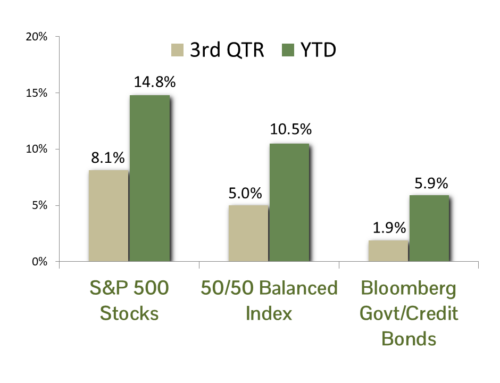Much has been written in the financial press about the power of systematic periodic additions to portfolios. Dollar cost averaging (DCA) is a more precise name for such strategies. DCA is powerful because the discipline that is part of the strategy – periodic additions to the portfolio – means that the DCA investor is making investments at a variety of prices. Some purchases inevitably will be placed when stocks are fully priced while others will be at market lows. But the net effect – and average of the purchase prices – is normally significantly less than if the investor attempted to time purchases based on their assessment of market pricing. Plus, the discipline of making the investments periodically takes the emotion out of the action, thus ensuring that investors will make the additions to the portfolio rather than sit on the sidelines in times of stress, which, paradoxically, are typically the best times to invest.
But DCA is normally discussed in the context of building a portfolio. How about when the time comes to take money out? Some investors will take monthly distributions from their portfolio while others take lump sums, especially when it comes to required minimum distributions off portfolios. What’s the best way to handle taking distributions or does it even matter?
Employing a DCA technique when withdrawing in retirement or whenever an investor wants to withdraw funds from the portfolio over time has a definite appeal. Take for example, the retired investor who wants to withdraw 4% of their portfolio each year for living expenses. If they take it in a lump sum, there is the risk that they may be taking it at an inopportune time. That’s in contrast to the investor that withdraws the same 4% out but instead does so once a month over a twelve-month period (1/12th of the 4% each month). In so doing, the monthly strategy avoids a big market timing bet. The investor may take money out one month at a market high (or worse, a market low) but each withdrawal is a much smaller bet than taking the 4% all at one time.
The other advantage of monthly withdrawals as opposed to one lump sum withdrawal, say, at the beginning of the year, is that most of the amount to be withdrawn in a year is left in the portfolio to grow. In a portfolio containing stocks, that obviously entails some risk as the stock market could decline over the year, but generally the stock market does have positive returns. After all, that’s why we buy stocks.
To test this theory I assumed a $1,000,000 starting portfolio as of January 1, 1995, that was invested in a portfolio consisting of 50% of the S&P 500 and 50% of the Merrill Lynch Government/Credit Bond index. Strategy I entailed withdrawing 4% of the portfolio ($40,000 year 1) at the beginning of the year while Strategy II distributed that same 4%, but in twelve equal monthly increments ($3,333 for a total of $40,000). Each year the withdrawal was reset to 4% of the previous year ending portfolio value. The study was conducted over a thirty year period ending December 31, 2024 – a typical 30 year retirement period.
Strategy II proved to be the better course of action over the 30 year time period of the study. Strategy I investors withdrew a total of $2,340,788 over the period and had a portfolio totaling $2,998,984 at the end of 30 years. Investors employing Strategy II however, were able to withdraw $2,391,100 ($50,312 more than Strategy I) over the same time frame and ended up with $3,108,831 ($109,848 more) in their portfolio. Not a huge difference, but advantage to Strategy II.
The study is hardly conclusive as it was conducted with one set of returns instead of multiple return distributions, which could change the results. And, as always, it should be noted that past performance is no predictor of future results.
But the strategy of utilizing DCA as a withdrawal technique is appealing for the same reasons that it works for building a portfolio. Plus, many retired investors may find it easier to budget when getting monthly distributions rather than annual lump sums.
CCM Investment Advisers, LLC is a Registered Investment Adviser registered with the U.S. Securities and Exchange Commission (CRD# 105743). The opinions and information contained in this report are for informational purposes only and are not meant to be predictors of future results. Such opinions and information do not constitute an offer or solicitation to provide investment advisory services. Such an offer can only be made in states where CCM Investment Advisers is registered. CCM Investment Advisers does not assume liability for any loss which may result from the reliance by any person upon such information or opinions.
Any type of investing involves risk of loss and there are no guarantees that the strategies described may be successful. Any performance data reported represents historical data and future returns may differ significantly. Past performance does not guarantee future results.
Security, index and economic information are obtained from resources which CCM believes to be accurate but no warrant is made to the accuracy or completeness of the information. Various indices described and discussed herein are unmanaged; investments cannot be made directly into an index.
The S&P 500 Index ® is a readily available, capitalization-weighted index of 500 stocks. The index is designed to measure performance of the broad domestic economy through changes in the aggregate market value of 500 stocks representing all major industries.
The Barclay’s Government/Credit Index is the non-securitized component of the U.S. Aggregate Index. The index includes US Treasuries, government-related issues and corporate bonds
All blended benchmarks are static blends.



